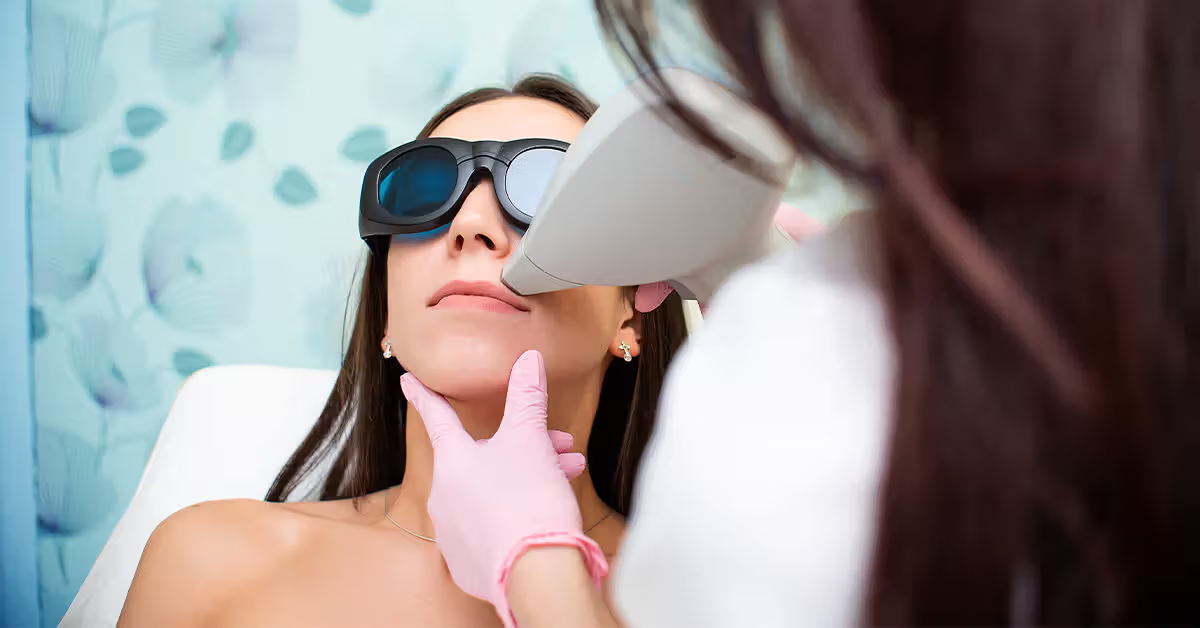
What is Laser Hair Removal?
Laser hair removal is a medical procedure that uses concentrated beams of light (lasers) to remove unwanted hair. The laser targets the pigment (melanin) in the hair, and the light energy is absorbed by the hair follicles, which inhibits future hair growth.
While laser hair removal doesn’t necessarily promise a permanent solution, it significantly reduces hair growth, with many people achieving long-lasting results after a series of treatments. The procedure works best for individuals with light skin and dark hair, though advancements in technology have made it effective for a variety of skin and hair types.
How Does Laser Hair Removal Work?
- Targeting the Hair Follicles: The laser emits light that is absorbed by the pigment in the hair. This energy is converted into heat, which damages the hair follicle and prevents future hair growth.
- Treatment Areas: Laser hair removal can be used on almost any area of the body, including the face, legs, arms, underarms, bikini line, and back. However, the procedure is particularly effective in areas with dark, coarse hair.
- Multiple Sessions Required: Since hair grows in different cycles, several treatments are usually required to effectively target all hair at the optimal stage of growth. Typically, 4-6 sessions spaced 4-6 weeks apart are recommended for the best results.
Benefits of Laser Hair Removal
- Long-Term Hair Reduction: Unlike shaving, waxing, or depilatory creams, which only provide temporary results, laser hair removal targets the hair follicle to prevent future growth, offering a more permanent solution to unwanted hair.
- Precision: Lasers are precise, targeting dark, coarse hair without affecting the surrounding skin. This makes it ideal for areas like the upper lip, chin, and bikini line.
- Speed: Each laser pulse takes a fraction of a second, and multiple hairs can be treated at once. Small areas, like the upper lip, can be treated in less than a minute, while larger areas, like the back or legs, may take up to an hour.
- Minimal Downtime: The procedure typically requires little to no recovery time. After treatment, you can resume your daily activities immediately, though some mild redness or swelling in the treated area may occur.
- Less Painful Than Other Methods: While not completely painless, many patients find laser hair removal less painful than waxing, especially when compared to the discomfort of frequent shaving or tweezing.
Potential Side Effects and Risks
While laser hair removal is generally safe, there are some side effects and risks to be aware of:
- Skin Irritation: Some people experience temporary redness, swelling, or irritation in the treated area. This usually subsides within a few hours to a day.
- Pigment Changes: In rare cases, people with darker skin tones may experience hyperpigmentation (darkening) or hypopigmentation (lightening) of the skin in the treated area.
- Blistering or Scarring: Although rare, there is a small risk of blisters, scarring, or skin burns if the laser is not used properly. This emphasizes the importance of choosing a trained, experienced professional for the treatment.
- Eye Injury: If laser hair removal is done near the eyes (such as for eyebrow shaping or upper lip treatment), there is a risk of eye injury from the laser light. Protective eyewear is always worn during treatment to minimize this risk.
- Regrowth: In some cases, hair may grow back after treatment, but it is typically finer and lighter in color. Follow-up treatments are often required to maintain the results.
Cost of Laser Hair Removal
The cost of laser hair removal varies depending on several factors, including the treatment area, geographic location, and the experience of the practitioner. Here’s a general breakdown:
| Area of Treatment | Average Cost per Session |
|---|---|
| Upper lip | $100 - $300 |
| Underarms | $150 - $250 |
| Bikini line | $200 - $400 |
| Full legs | $400 - $800 |
| Back or chest | $500 - $900 |
| Full body | $1,000 - $2,500 |
It’s important to note that most people require 4-6 sessions to achieve optimal results. Therefore, the total cost of the treatment can add up over time. However, laser hair removal can save you money in the long run by reducing the need for shaving, waxing, or other hair removal methods.
Many clinics offer package deals that allow you to pay for multiple sessions in advance at a discounted rate.
Is Laser Hair Removal Right for You?
Laser hair removal is ideal for people who are tired of the time-consuming and sometimes painful upkeep of traditional hair removal methods. However, it is not suitable for everyone:
- Best Candidates: Individuals with light skin and dark hair tend to see the best results, as the laser targets the pigment in the hair. However, modern lasers are now effective for a wider range of skin tones and hair colors.
- Not Ideal for Certain Areas: Laser hair removal is generally not recommended for treating light, fine, or gray hair. It’s also less effective on very light or very dark skin tones due to the contrast between skin and hair pigment.
- Expectations: It's important to understand that while laser hair removal significantly reduces hair growth, it may not completely eliminate hair in all cases. A few maintenance sessions may be needed to keep the area hair-free.
Before deciding if laser hair removal is right for you, consult with a qualified practitioner who can assess your hair and skin type and provide a treatment plan tailored to your needs.
Aftercare and Maintenance
- Sun Protection: After the treatment, it’s essential to protect your skin from the sun to prevent pigmentation changes. Wear sunscreen (SPF 30 or higher) and avoid direct sun exposure for at least a few weeks.
- Avoid Hot Showers or Baths: For 24-48 hours after treatment, avoid hot showers, saunas, or vigorous exercise to reduce the risk of irritation.
- Don’t Pluck or Wax: Avoid plucking or waxing the treated areas between sessions, as it can disturb the hair follicles and interfere with the treatment process.
- Shaving is Fine: You can shave the treated area, but avoid waxing or plucking the hairs.
Conclusion: Is Laser Hair Removal Worth It?
Laser hair removal offers a long-term solution for those looking to reduce unwanted hair with fewer maintenance costs than traditional methods like shaving and waxing. While the upfront cost may seem high, the investment pays off in the long run due to its efficiency, precision, and lasting results.
If you're considering laser hair removal, consult with a professional who can help determine whether you're a good candidate and provide the best approach to achieve your hair removal goals. Keep in mind that the procedure may require several sessions for optimal results, but with proper aftercare, you'll enjoy smooth, hair-free skin for years to come.






